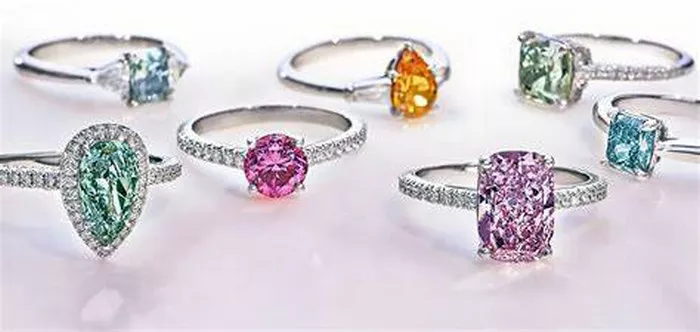Among the most enduring symbols of love and luxury, diamonds possess an intrinsic allure that captivates the human eye. At the heart of their mesmerizing beauty lies their ability to interact with light, transforming it into a dazzling spectacle. The sparkle of a diamond, often described as its brilliance, is a result of intricate optical phenomena within its crystalline structure.
Light, upon striking a diamond, undergoes a complex journey of reflection, refraction, and dispersion. The cut of a diamond plays a pivotal role in orchestrating this dance of light. A well-cut diamond, with precise proportions and symmetrical facets, maximizes the reflection of light back through its crown, creating a scintillating display of brilliance, fire, and sparkle. Conversely, a poorly cut diamond may allow light to escape through its sides, diminishing its sparkle.
Factors Affecting Diamond Sparkle:
1. Dirt and Grime: Despite their resilience, diamonds are not impervious to the effects of daily wear. Over time, oils, lotions, and dirt can accumulate on the surface of a diamond, obscuring its natural radiance. This buildup forms a thin film that inhibits the reflection of light, resulting in a dull appearance. Regular cleaning is essential to remove these contaminants and restore the diamond’s sparkle.
2. Scratches: Surface abrasions, though minuscule, can have a significant impact on a diamond’s brilliance. Everyday activities, such as handling or storing jewelry alongside other items, can subject diamonds to microscopic scratches. These imperfections disrupt the smooth surface necessary for optimal light reflection, causing the diamond to lose its sparkle gradually. While diamonds are among the hardest substances on Earth, they are not immune to abrasion, and care must be taken to minimize the risk of scratching.
3. Inclusions: Natural diamonds often contain internal imperfections known as inclusions. These microscopic flaws, ranging from tiny crystals to feather-like fractures, can interfere with the passage of light through the diamond. When light encounters an inclusion, it may scatter or become absorbed rather than reflecting back to the observer. As a result, the brilliance of the diamond is diminished, and its sparkle appears subdued. While some inclusions are characteristic features of natural diamonds, others may be introduced during the cutting and polishing process. Diamond clarity, which refers to the absence of inclusions and blemishes, is a crucial determinant of a diamond’s sparkle.
4. Chips and Damage: Physical trauma, such as impacts or accidental contact with hard surfaces, can cause chips, fractures, or other forms of damage to a diamond. These structural irregularities disrupt the uniformity of the diamond’s surface and alter the way light interacts with it. Instead of being reflected in a cohesive pattern, light may scatter or refract unpredictably, resulting in a diminished sparkle. Proper handling and care are essential to safeguard diamonds against such damage and preserve their brilliance over time.
Tips to Maintain Diamond Sparkle:
1. Regular Cleaning: To prevent the accumulation of dirt and grime, diamonds should be cleaned regularly using mild detergent and warm water. A soft-bristled brush can be used to gently scrub the surface and remove stubborn residues. Ultrasonic cleaners may also be employed for deeper cleaning, although caution should be exercised to avoid damaging delicate settings or loosening gemstones.
2. Safe Storage: When not in use, diamond jewelry should be stored in a soft pouch or jewelry box to shield it from dust, moisture, and abrasive surfaces. Individual compartments or soft fabric-lined trays can help prevent scratches and minimize the risk of contact with other pieces. Special care should be taken to avoid storing diamonds alongside harder gemstones or metal objects that could potentially scratch or damage them.
3. Regular Inspections: Periodic inspections by a professional jeweler are recommended to assess the condition of diamond jewelry and identify any signs of wear or damage. Loose prongs, worn settings, or other issues can compromise the security of the diamond and increase the risk of loss or damage. Prompt repairs and maintenance can help preserve the integrity of the jewelry and ensure the longevity of its sparkle.
4. Avoid Exposure: While diamonds are renowned for their durability, they are not indestructible. Activities that subject diamonds to excessive wear or risk of damage, such as sports, manual labor, or household chores, should be performed with caution, or diamond jewelry should be removed altogether. Similarly, exposure to harsh chemicals, such as chlorine or bleach, can tarnish metal settings and affect the brilliance of diamonds, necessitating careful removal before engaging in such activities.
In conclusion, the eternal sparkle of diamonds is a testament to their timeless allure and enduring appeal. However, maintaining their brilliance requires diligent care and attention to detail. By understanding the factors that can diminish diamond sparkle and following best practices for maintenance and preservation, enthusiasts can ensure that their beloved gemstones continue to dazzle for generations to come.

